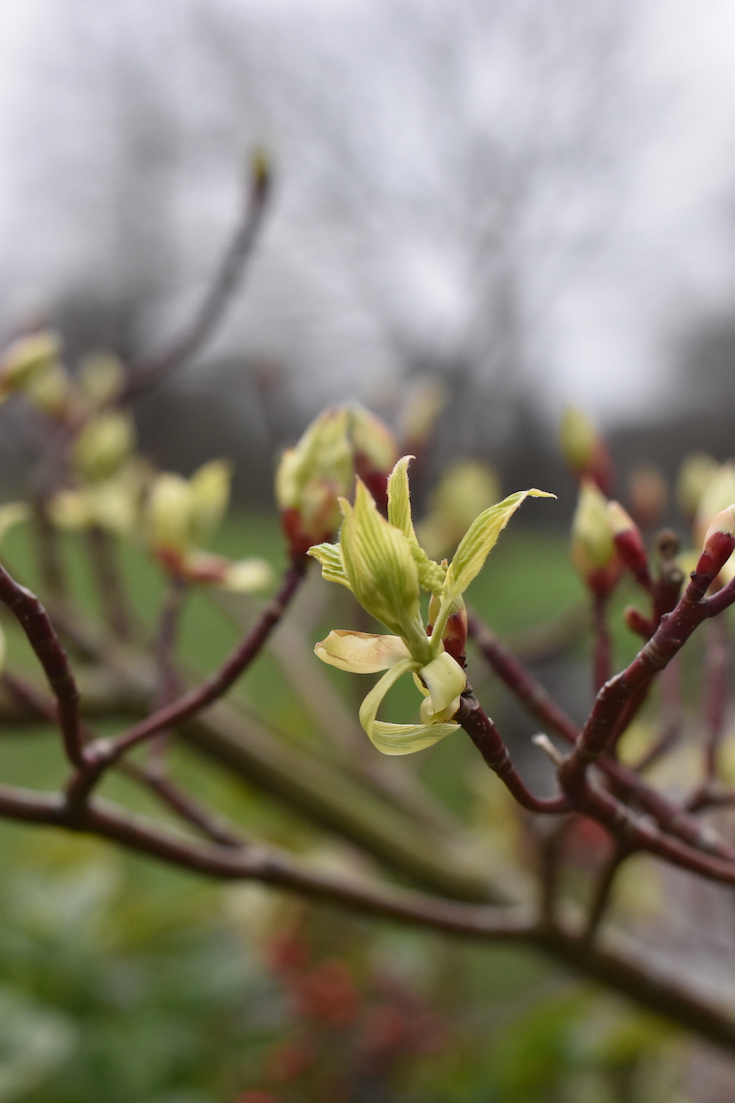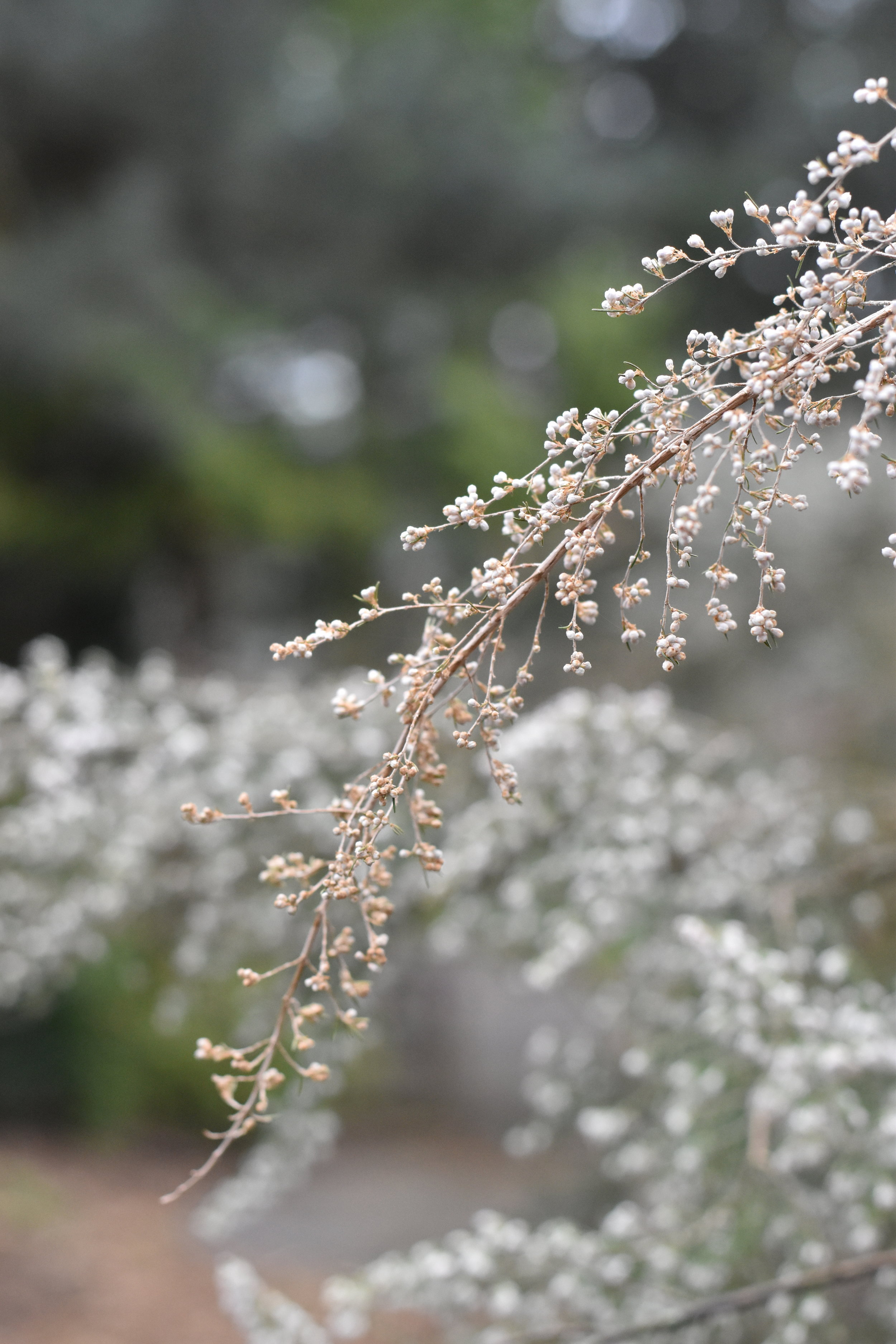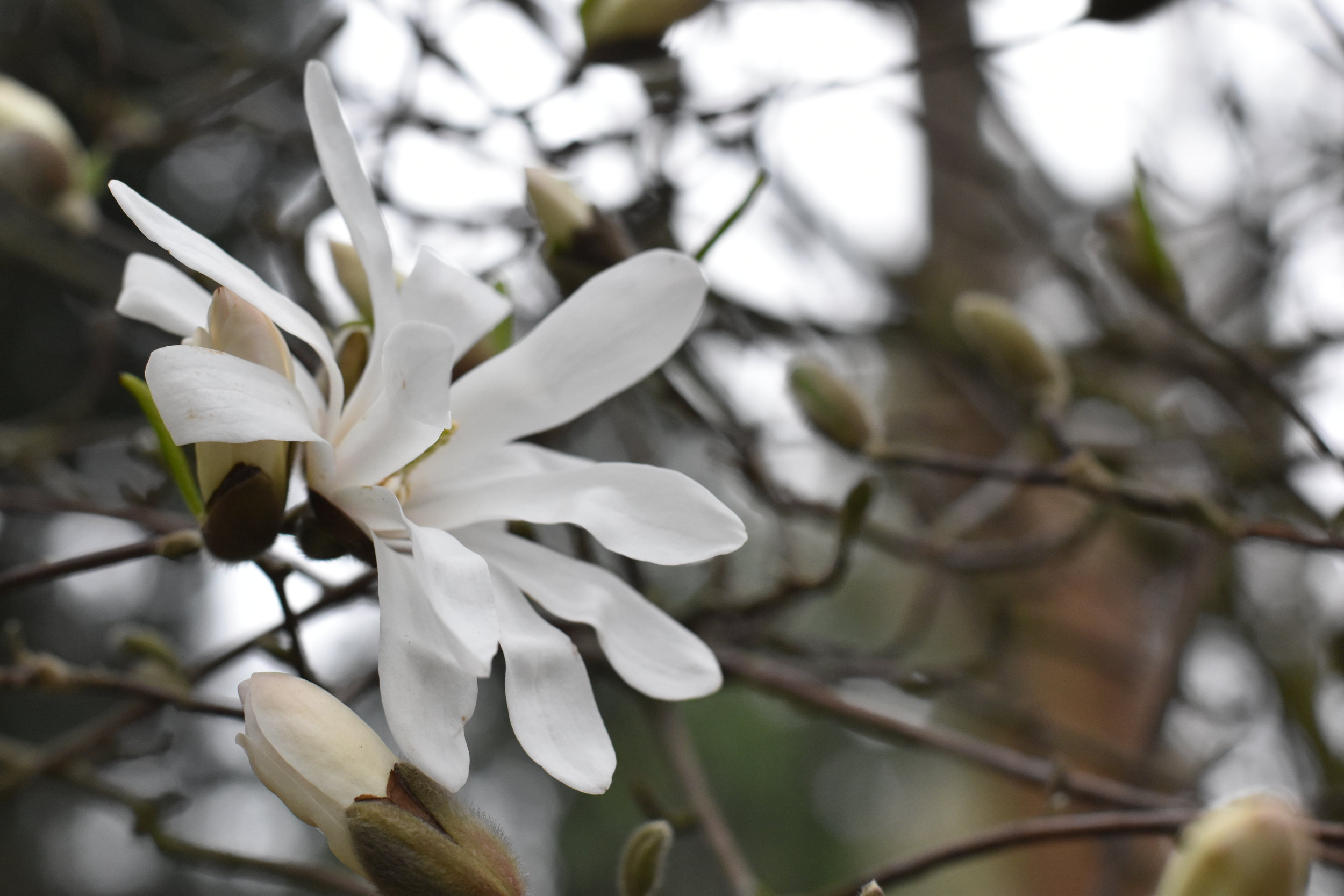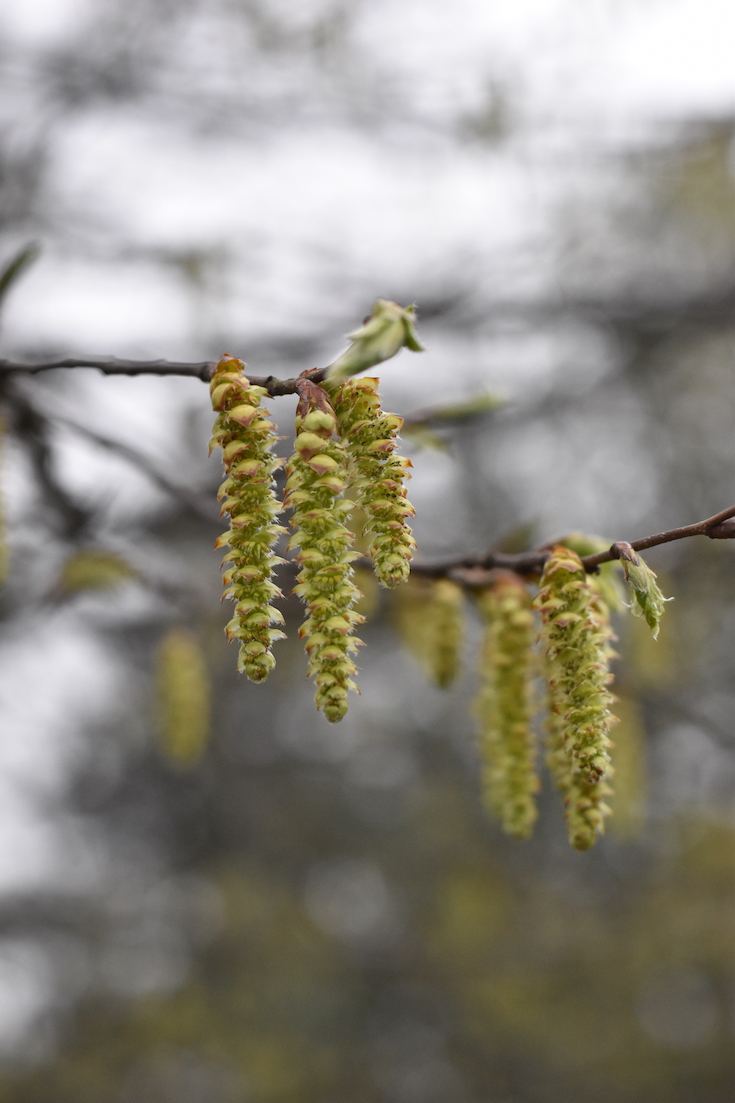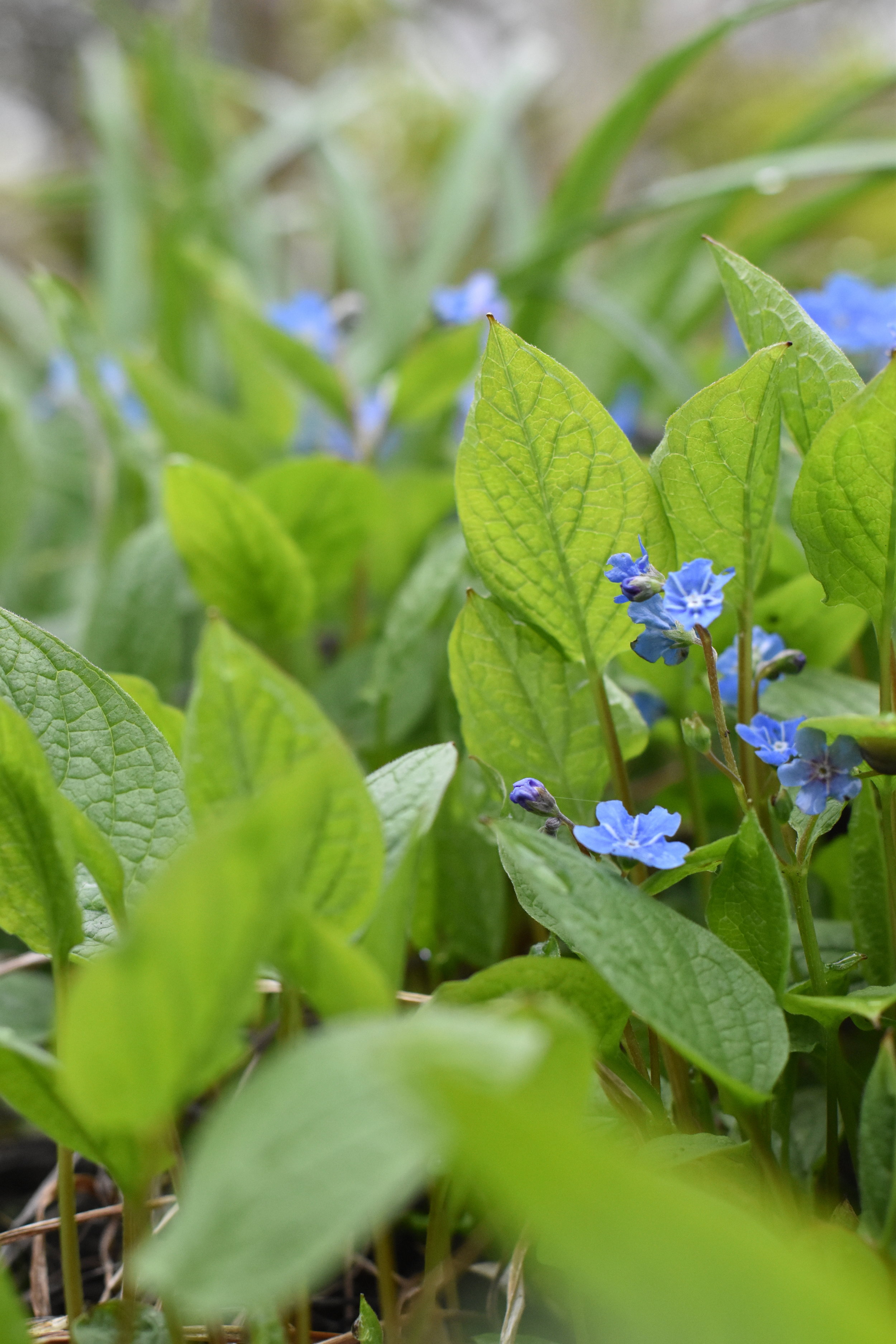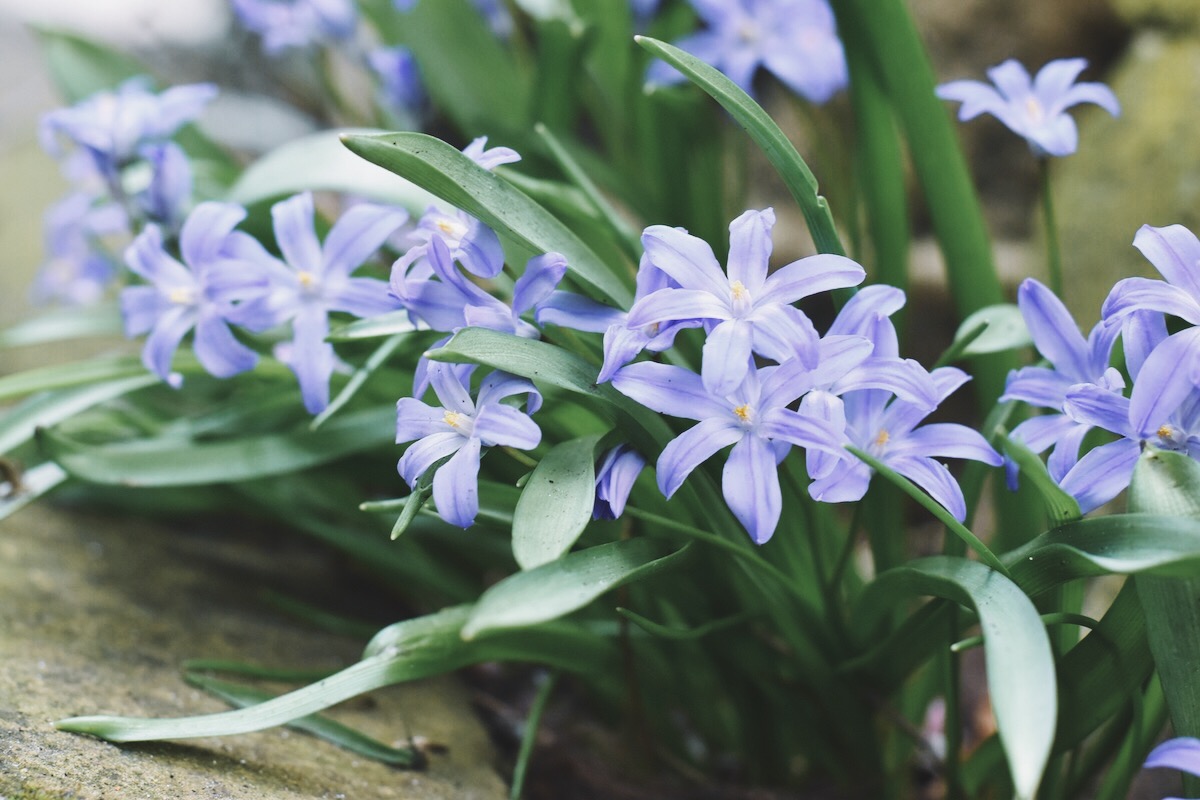Gorgeous planting at Golders Hill Park
This young woman, flip flops beside her, has been relaxing in the park for nearly thirty years. She looks a bit chilly in winter.
How often do you get out and look, really look, at delicious gardens? It’s so easy to get insular, to stay focused on our own little patch of garden, read books and search online for inspiration but getting out and about and actually seeing the plants well grown, makes the most enormous difference and is incredibly inspiring. I find it’s so much less effortful to imagine how a plant will work if I’ve seen it in in person, so to speak, not to mention inspiring. It’s one of the things I recommend clients do as they work to gain confidence in their own garden-creating abilities.
So - in the spirit of encouraging myself to get out and into gardens more I have hatched a new plot - garden with wellbeing walks for garden lovers. I love visiting and talking gardens and sharing my enthusiasm and delight so have decided to share the love, and research is needed. This new series of garden posts is part of that research and this is the first, I hope, of many.
So a couple of weeks ago I followed my own advice and took my camera to an old haunt, Golders Hill Park near Golders Green in North West London to see what was happening. It’s a park in London that is very close to my heart. My mother went to school across the road and walked here often and I brought my children practically every time the weather was good enough. I’m delighted to share it with you.
The park
Golders Hill park is a wonderful park even over and above having areas of gorgeous planting - a real day out for all the family with a little animal area (think deer, donkeys, an owl, lemurs and more) plus views over the hills outside London, a lovely cafe with home-made Italian ice-cream and sand filled play area. Something for everyone literally.
The walled garden
I headed to the Walled Garden first and wasn’t disappointed as it was bursting with camera worthy spring delights such as catkins, magnolia, and I particularly enjoyed the shady planting of Magnolia grandiflora, wonderful old curvy gnarly ones, underplanted with box balls, ferns and hydrangeas.
Shady planting - please excuse the picture - taken a while ago on my phone - but you get the idea…. oh and this was taken when the Hydrangea were out - so autumn rather than spring…
Such a clever combination for a shady area under mature trees as it offers long season interest, delicious contrast of texture (ferns associating with box) and stupendous flowers - the beautifully elegant Magnolia grandiflora just beginning to go over and then, later in the year, Hydrangea paniculata with its great big heads made up of multiple flowers that change colour as they age.
There were even some lovely clumps of the elegant and weeping grass which, I’m afraid, is now known as Anemanthele lessoniana. It used to be called Stipa arundinacea - easier to say - before it was re-classified. Anyway - whatever it’s name it is a lovely grass that is evergreen, happy in shade and changes through green, burgundy, gold and brown as the seasons progress.
Round and about were also little shots of Anemone blanda and chinodoxa low to the ground and offering a vivid shot of blue to the scene. So worthwhile getting down close and personal with them and my camera.
The sweetest little Chinodoxa
It was the more recently planted beds, however, that I’d come to check out. I’ve been walking in this park for thirty years and about ten years ago was delighted to see boards describing plans to renew the planting and watched with interest as the old plants were removed and new, young lovelies went in. I so enjoy the choices that were made, and the combinations, and over the years the gardeners have added to this stylish planting and maintained it all beautifully.
Why does good planting work?
There’s a reason why good planting works and its because the tenets of good design are present. Although the borders and paths of the garden were not re-designed this is a wonderful example of how adding new delicious planting can really make the most of less than perfect layout in a garden.
The design principle of structure and simplicity is clear in each of the three long borders and is offered by the well sized cubes of yew each centred with a standard (with a tall single stem) evergreen Bay also pruned to cube shape that are dotted repeatedly and irregularly within the scheme. These also offer height and a simple, calm contrast to the lively and vibrant mixed planting below and move you through the planting in a flowing and relaxing way.
The mixed planting embraces grasses, perennials, roses and bulbs with plenty of repetition - another feature of good design. Rhythm, incredibly important as a way of creating calm and a sense of order, is provided later in the season by Allium ‘Purple Sensation’ which threads through the beds.
And here is another lesson here for us garden-creators. Less is always more. It’s so easy as a gardener who loves plants to pop a plant in here and another in there - to pick up something gorgeous at the garden centre without knowing where it’s going, pop it in a space and hope for the best - but the result is often bitty and un-relaxing. Many people know the edict - ‘plant in groups of three or more and in odd numbers’. Well, this is the reason. Stick to larger groups of a smaller number of plants and repeat them around the garden and you will have a more pleasing space.
The plants chosen throughout the Walled Garden also offer a wonderful contrast of texture and shape and this, again, helps to create an enticing and satisfying planting. Different heights, shapes and textures planted in association with each other to create a picture.
I’ve said it before and I know I will say it again. An effective planting is one which can be photographed in black and white and still look attractive. And focusing on the foliage over and above the flowers will help you to achieve this. It’s the leaves and shape of the plant that will have the greatest impact for the longest time while the flowers are really transitory.
Choosing well shaped plants with good, long lasting and contrasting textures of foliage throughout the garden, as well as colour is what gives a really effective and, crucially, long lasting display.
Obviously if you’ve got a border that you only see in the high season months it’s fine to plant it with perennials that disappear in winter and look amazing for three months but a smaller garden that you look at it all year needs more careful planning.
The Stumpery
The Stumpery exemplifies this beautifully. Structure is provided by the amazingly gnarly and dramatically shaped tree roots which are planted with an equally interesting selection of well chosen plants, this time for shade. Hellebores, ferns, native bluebells, hydrangea. All here looking amazing thrown into focus by the stumps. A little stream runs through to add sound and even more pleasure to the scene. Squirrels vie for nuts and all feels well with the world as I wander through a little shady little haven that is not far from the bustle of London.
It’s taken me a while to write this post and spring has moved on meanwhile. The Magnolia flowers are coming to an end as are the little anemone flowers - making it all the more important that I saw them when I did, and before the next gorgeous players step onto the stage.
Do go!
Getting out and about is so satisfying and enlivening and I’m still gaining pleasure from my outing. I didn’t visit the very lovely Hill Garden and Pergola which are right next door on this occasion as dogs are not allowed in there - that’s a joy for next time - but do visit that too if you’ve got time - well worth the visit.
The gorgeous Hellebore foetidus (native and known as the Stinking Hellebore for obvious reasons)
Visiting Golders Hill Park
Golders Hill Park is in London NW11. The nearest tube station is a northern line station called Golders Green which is about 5 minutes’ walk away. The cafe has a wonderful sunny terrace outside and is a fabulous place to have a coffee and admire the view towards the hills outside London on a clear day.


